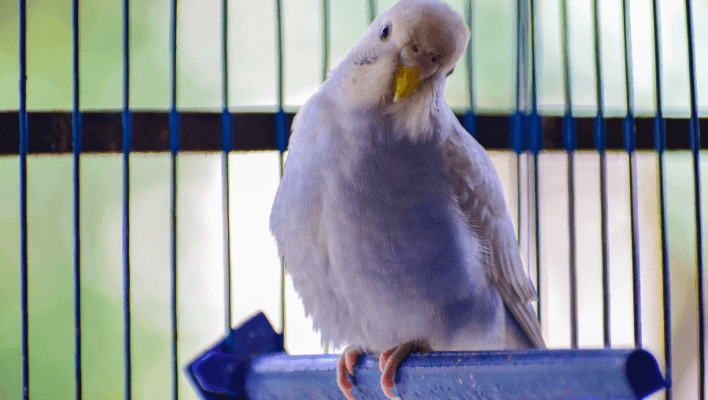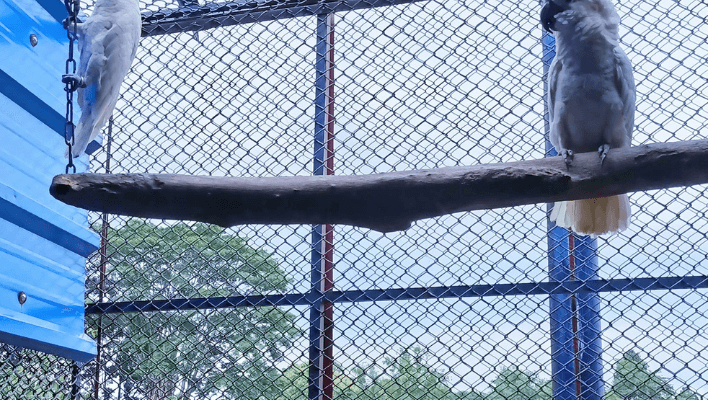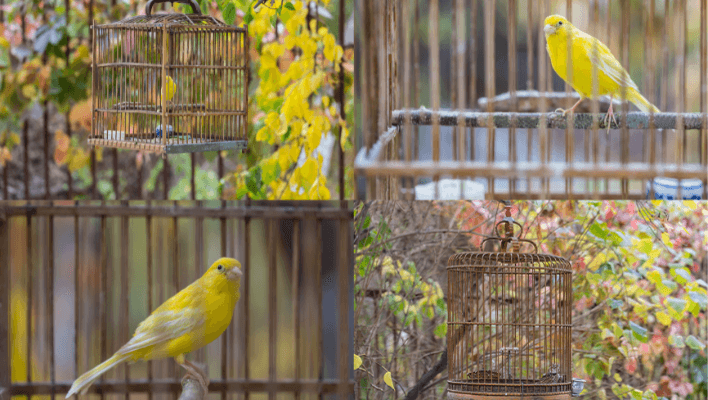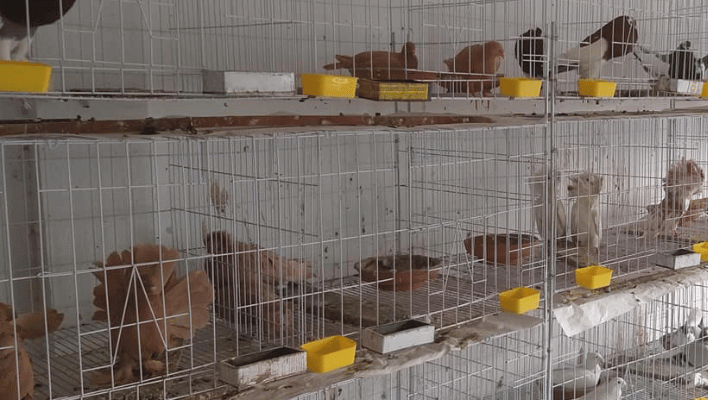Introduction
Table of Contents
Bird Cage Types: Examining Your Options
There are many different forms, layouts, and aesthetics for bird cages. Popular varieties include:
1) Regular Cages
- The most popular kind of cages are standard cages, which include vertical bars in a rectangular or square design. They give your bird plenty of room to fly around and exercise.

2) Flight cages
Larger enclosures called “flight cages” enable your bird to extend its wings and do brief flights inside the cage. For energetic bird species that need extra space to exercise, these cages are perfect

3) Dome Cage
The curving roof of dome cages gives birds who like to roost at the highest point more headroom. The curved shape gives your bird’s home a beautiful finishing touch.

4)Breeder Cages
Breeder cages are designed for bird enthusiasts who wish to breed their feathered companions. These cages often have dividers to separate breeding pairs or to provide individual compartments for fledglings

Choosing the Correct Cage Sizes to Ensure Comfort and Safety
Choosing the proper bird cage is crucial for providing a comfortable habitat for our feathered friends. Our birds’ physical and mental health are promoted as well as their safety in a well-designed cage. In order to assist you in making an informed choice for your feathered companion, we shall examine the world of bird cages in this post, focusing on various varieties and suitable cage sizes.
- Understanding Cage Sizes’ Importance: Our cherished pets find refuge in bird cages, which provide them with a comfortable space to rest, play, and feel safe. It’s critical to pick a cage that is the right size so that birds have enough room to move about, spread their wings, and exhibit natural behaviors. It is crucial to take your bird’s size and species into account when determining the cage’s measurements.
- Types of Bird Cages and Recommended Sizes:
- Flight Cages:
- Size: Minimum dimensions of 36 inches (width) x 24 inches (depth) x 24 inches (height)
- Suitable for: Small to medium-sized birds such as finches, canaries, budgies, lovebirds, and cockatiels. These cages offer ample room for flight and exercise.
- Cages for parakeets:
- Minimum size requirements are 24 inches in width, 18 inches in depth, and 18 inches in height.
- Suitable for: Parakeets, little conures, and other birds of a similar size. These cages have considerable room for walking about and perching.
- cages for cockatiels
- Minimum size requirements are 24 inches in width, 24 inches in depth, and 24 inches in height.
- Cockatiels, small parrots, lovebirds, and other comparable-sized birds are suitable. They fit comfortably inside these cages, which also accommodate their size.
- Conure Cages
- Size: The minimum required measurements are 36 inches wide by 24 inches deep by 36 inches high.
- Conures, small- to medium-sized parrots, Quaker parrots, and comparable-sized birds are suitable. There is plenty of room for climbing and playing in these cages.
- African Grey Cages
- Size: Must be no less than 36 inches wide, 24 inches deep, and 48 inches tall.
- Appropriate for: Small to medium-sized parrots, Amazon parrots, African Grey parrots. There is space for movement and a variety of activities in these bigger cages.
- macaw cages
- Size: Must be no less than 48 inches wide, 36 inches deep, and 60 inches tall.
- For birds of similar sizes, including macaws, giant cockatoos, large Amazon parrots, etc. These roomy cages accommodate their enormous size and provide them plenty of room to move.
- Flight Cages:
Durability and safety are the best bird cage materials.
Take into account the components employed in the cage’s construction while choosing one. Here are a few well-liked choices:
- Steel, stainless cage
- Cages made of stainless steel are incredibly robust, non-toxic, and simple to maintain. They are a great option for long-term use because they are rust-resistant and do not have any hazardous coatings.
- Wrought Iron Cage
- Cages made of wrought iron are strong and attractive. However, they could need more upkeep, thus regular cleaning and suitable coating are required to prevent corrosion.
- Cages With A Powder Coat
- Cages that have been powder-coated include a layer of colored powder for further rust defense. Make sure the coating is non-toxic and has undergone avian safety testing.
Features of Cages to Promote Bird Welfare
Strength and Bar Spacing:
To prevent escape or harm, the spacing between the bars should be suitable for your bird’s size. Additionally, the bars must be robust enough to withstand chewing and climbing.
Removable Tray and Grate:
Cleaning is made considerably easier by the removable tray and grate at the bottom of the cage. This feature keeps waste from accumulating and keeps your bird’s surroundings clean.
Multiple Perches and Toys:
Your bird will remain active both mentally and physically if there are a variety of perches and toys accessible. Ensure that the cage has enough space for this essential gear.
Additional Considerations:
Despite the fact that the dimensions are the absolute minimum, it is always better for your bird’s welfare to give a larger cage. To prevent escape or harm, it’s crucial to check that the cage bars’ spacing is suitable for your bird’s size. To provide your bird with an enriching habitat, think about how perches, toys, and feeding stations are arranged inside the cage.
Conclusion:
For our feathered companions to live in a secure and comfortable environment, choosing the proper cage size is essential. We can make sure that our birds have adequate room to thrive, exercise, and engage in natural behaviors by being aware of the many types of bird cages and their suggested sizes. In order to ensure your beloved bird companion’s happiness and wellbeing, choose a bird cage carefully.

